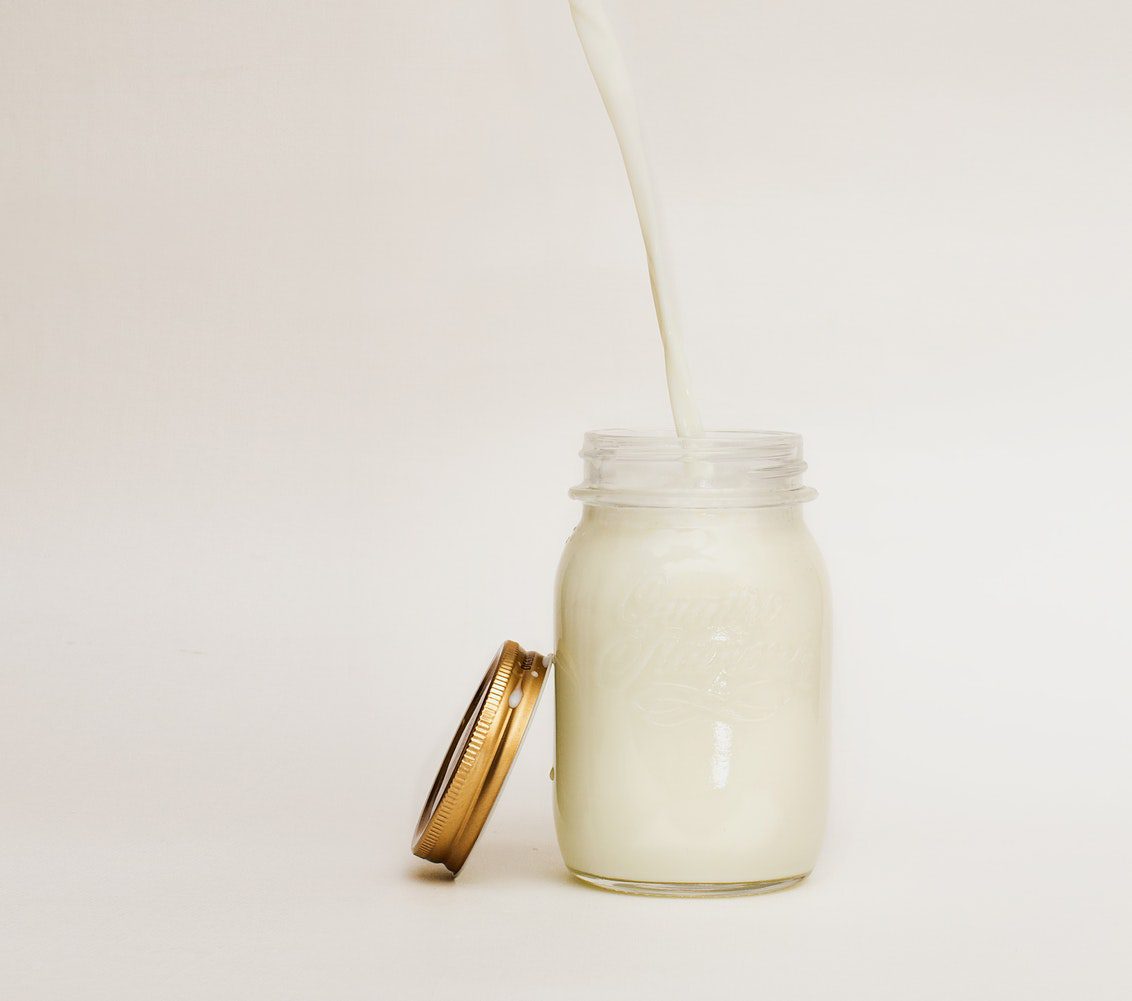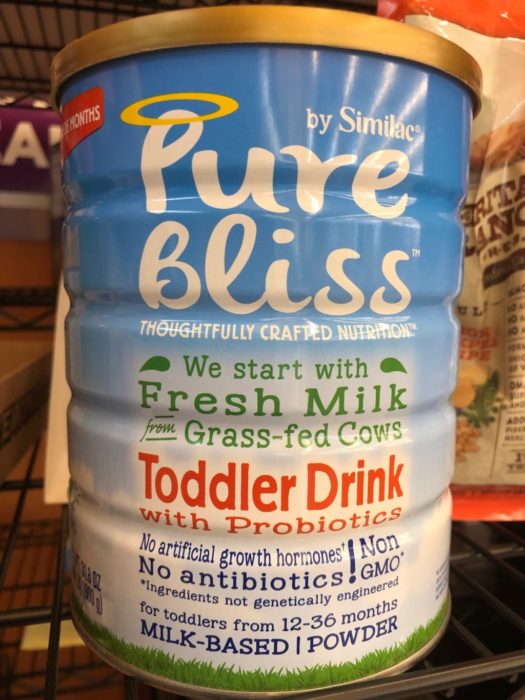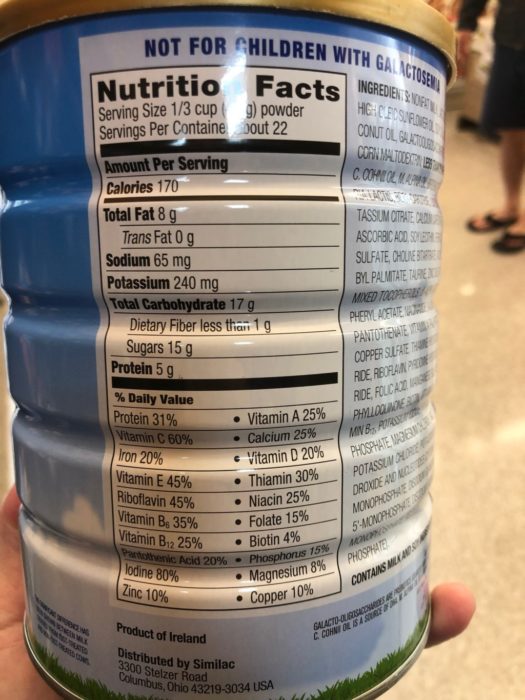

Feed Your Child Goat’s Milk. Full Fat.


I suffered from post-partum depression after my first son was born. I didn’t realize how bad I was suffering until I ended up hospitalized. He was just 6 months old and because of the medication I was taking, I had to stop breastfeeding.
It was a dark period in my life, but as I look back now, it was the catalyst for my search to optimal health. This period was what made me realize that nutrition is the best medicine.
When I stopped breastfeeding, I started heavily researching the next best thing to breast milk.
I flew in organic formula from Germany as European laws are much more stringent with organic regulations. Then when he turned one, I started searching for the best animal milk.
Raw Goat’s Milk
What I found is raw goat’s milk is best. And how great is it that we live in one of the few states that allow raw milk to be sold. Texas does not permit raw milk to be sold off the farm it’s produced so you’ll never find it at a farmer’s market or grocery store but contact a local farm and you can get your hands on some raw goat’s milk.
Goat’s milk contains less lactose (sugar) than cow’s milk, 13% more calcium, 25% more vitamin B6, more vitamin A and 134% more potassium than cow’s milk.
Goat’s milk is more digestible than cow’s milk because its molecular size and composition is similar to that of breastmilk. Goat’s milk also enhances nutrient absorption. Studies have found that goat’s milk can help address iron and magnesium deficiencies.
We go with raw because 1) we trust our farmer (he gives us quarterly milk test results) and 2) pasteurizing milk may kill some bad bacteria but it also kills most of the vitamins and minerals.
Question to Ponder: States are scared of selling raw goat’s milk, in case of people getting sick. But raw cheese is permissible?
Organic Cow’s Milk
Have you noticed that organic milk lasts much longer than conventional milk?
Have you noticed that children’s organic milk boxes usually sit outside on market shelves but the half-gallons are refrigerated?
Organic milk lasts long due to a process called ultrahigh temperature (UHT). Milk is heated to 280 degrees for 2-4 seconds, killing any bacteria in it, compared to standard pasteurization of 145 degrees for 30 minutes or 160 degrees for at least 15 seconds. Standard pasteurization doesn’t kill all bacteria in milk, just enough that you don’t get sick. UHT kills everything (including vitamins and minerals) and can sit on a shelf for 6 months. 6 months. We can barely keep frozen breast milk for 6 months.
So why are the half-gallons refrigerated?
Purely perception.
We grew up buying milk from the fridge. When organic milk was being sold on the shelves, it wasn’t selling. All they needed to do was put it in the fridge and we started buying organic.
Ponder This: We choose organic so we get healthier cow milk for our kids but is it really better? We strip all the bacteria and vitamins from the milk and then add it back in through processing. Organic cow milk – does it really do a body good?
Low-Fat Milk
When we remove fat from dairy, we make it less satiating and promote overeating. Studies have shown that children who drink low-fat milk gain more weight than those whole drink whole milk. What’s worse is by removing the fat, they replace it with sugar and artificial flavors to be more palatable.
Chocolate milk has 29 grams of sugar per 12 ounces. Coca-cola has 39 grams per 12 ounces.
Fat is among the healthiest nutrients in milk. Low-fat milk has no vitamin D. I’ve talked about the issue with fortified (enriched/added) vitamins here. It is required under federal law to add in vitamins A and D because removing the fat simultaneously removes these two essential vitamins. But funny thing is that adding fat-soluble vitamins like A & D back into fat-free milk is pointless—you need fat to digest these vitamins. (off topic, eat carrots WITH fat to absorb vitamin A from beta carotene!)
Full fat butter is also healthier than all butter substitutes, including margarine and vegetable oil spreads. A number of studies have shown that fats in dairy help protect against cardiovascular diseases. There are also studies that show, butter in the blood protected against Type 2 Diabetes.
Ponder This: Our pediatricians recommend switching to low-fat milk once our child turns 2. Why? Because of the rampant increase in child obesity—the government requires them to follow these guidelines and then we follow suit. But did you know that most doctors get very little to no nutrition education during medical school?
All children drink milk for calcium and vitamin D—it’s literally the doctor’s orders. Sadly, we are getting these nutrients from milk products that have been fortified with them—none of it’s natural. If we know that vitamin supplements aren’t always absorbed by the body, why do we think that fortified vitamins in foods are any different?
Let’s look at a case study since many of us are visual.
This milk product sounds like pure bliss: grass-fed cows, probiotics, non-GMO, no artificial growth hormones (likely growth hormones still used) and no antibiotics. But look a little closer at the nutrition facts and things don’t seem as blissful.


1st warning: not for children with galactosemia (disorder that affects body processing simple sugars).


Ingredient 1: Non-Fat Milk
Grass fed cow milk but the milk is nonfat? No wonder the can states “We start with fresh milk from grass-fed cows.” This product is not grass-fed milk. It’s basically processed milk with all the nutrients lost during processing. Then pseudo-nutrients added back in. Whereas, breast milk per cup, has about 11g of fat.
Then why does the Nutrition Facts state 8 g of fat per serving?
Stay tuned.
Ingredient 2: Lactose
Lactose is the sugars in cow milk. To be fair, while 65% of the adult population can be lactose intolerant, babies’ lactose intolerance is different. If babies (up to the age of 2) have lactose issues, it’s usually because of some disorder or because of damage to the gut lining. Still, cow’s milk is less like breast milk and can be hard on the digestive system for babies. Goat milk is more like human milk.
Ingredients 3 & 4: High Oleic Sunflower & Soy Oil
Ah, here’s the fat. High-oleic sunflower oil is more stable than regular sunflower oil but both sunflower and soy oils are still refined oils, prone to rancidity and fragility (oxidation) and are depleted of nutrients. Soy can also disrupt thyroid function and hormones like testosterone. Basically, these oils wreak havoc on healthy cells in the body.
Sadly, we’re feeding this to babies.
Ingredient 7: Corn Maltodextrin
Another like-sugar used as a filler but that also raises blood sugar. Maltodextrin can also suppress the growth of probiotics and has been linked to intestinal disorders. Remember, this is a “Toddler Drink with Probiotics”. If maltodextrin is inhibiting natural probiotic growth, I highly doubt any of the fortified probiotics (like galactooligosaccharides) are doing much of anything.
Since this is a 12-36-month-old milk-drink, it is recommended to be given after 12 months of age. If milk is going to be given to a child at this age, I recommend raw goat’s milk as it is more similar to human milk and easier on the digestive system than cow’s milk.
This milk seemed promising but it still can be better. Always check labels and ingredients before buying because sadly, this product is one of the better milk-drinks for babies and toddlers.


Alternative Options: Homemade Formula
If you have to feed your baby formula, try making homemade formula.
There’s a great homemade formula with raw goat’s milk. Skip any of the seed oils.
Weston A Price also has a great one with raw cow’s milk.
We all want the best for our children. Some moms prioritize education, some prioritize behavioral. Because of my PPD, it led me to nutrition and in turn, prioritizing their health. I leave everything else to my husband.
w️ith ♥ and hope for healing,

If you enjoyed this blog post, you may also enjoy these Nutrition with Judy blog posts:
- Raw vs. Pasteurized Milk
- Make Meat a Priority for You and Your Children
- What’s in Canola Oil
- Don’t Eat Just Beef on a Meat-Based Diet
DISCLAIMER: The content is for educational purposes only. While I am a nutritional therapy practitioner, I am not providing medical advice. Whenever you start a new diet or protocol, always first consult with your trusted practitioner.




soundos
February 12, 2020 at 7:29 amVery nice post and helpful information
Mustafa
April 12, 2020 at 5:37 pmAmazing, keep up the good work. You are truly doing a splendid job !!
Bionaze
July 23, 2020 at 6:58 amNow I know! I will replace cow’s milk for goat’s milk as it is better and more nutritious! Thank you for sharing these very valuable and helpful pieces of information! Worth my time reading it!
Nutrition with Judy
September 4, 2020 at 1:24 amTHANK YOU! We make monthly trips to the farm for raw goat’s milk. Our kids LOVE it and have never gotten sick in the 5+ years we’ve been going. Trust your farmer and raw milk is the best option!
Chad
March 23, 2021 at 8:49 amSadly we have no access to raw milk. Are there any studies showing the differences between batch vs ultra pasteurizing and would you say that non-homogenized, batch pasteurized milk is better than any other you can buy when raw milk is not an option?
Emily
February 16, 2022 at 6:54 pmWhat about milk for adults? I’ve never enjoyed milk growing up so I didn’t drink it and then I drank vegan milk alternatives….. I feel my body changing and was wondering if I should take up goats milk…?
Nutrition with Judy
February 17, 2022 at 1:19 pmAlways go by your symptoms. If you feel well with raw milk or goat’s milk, it’s a great addition. Check out this post on milk: https://www.nutritionwithjudy.com/raw-vs-pasteurized-milk/